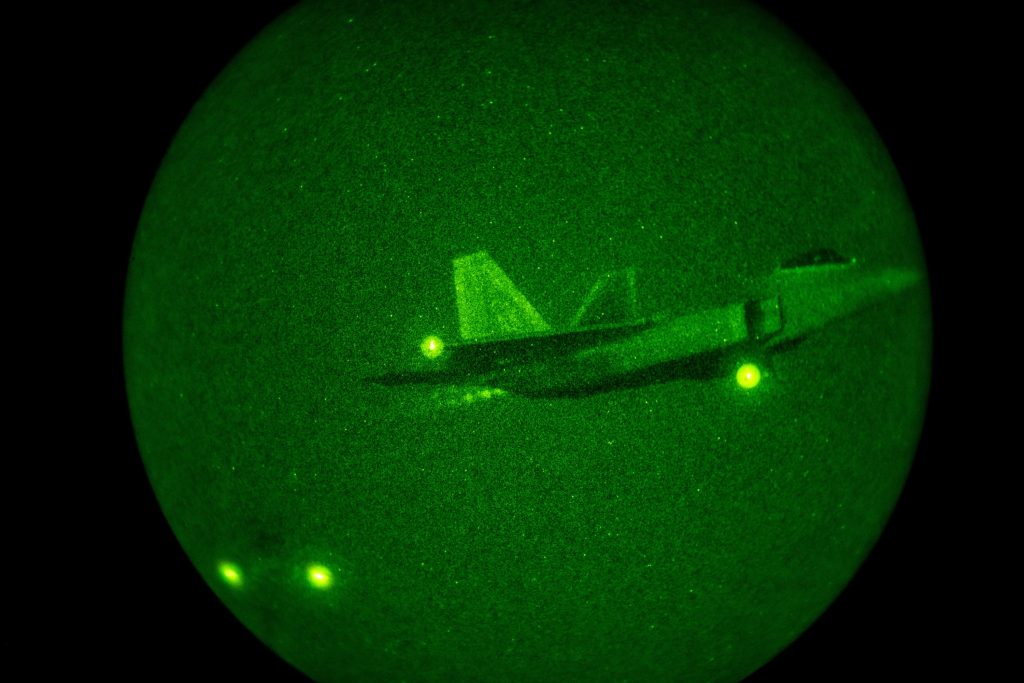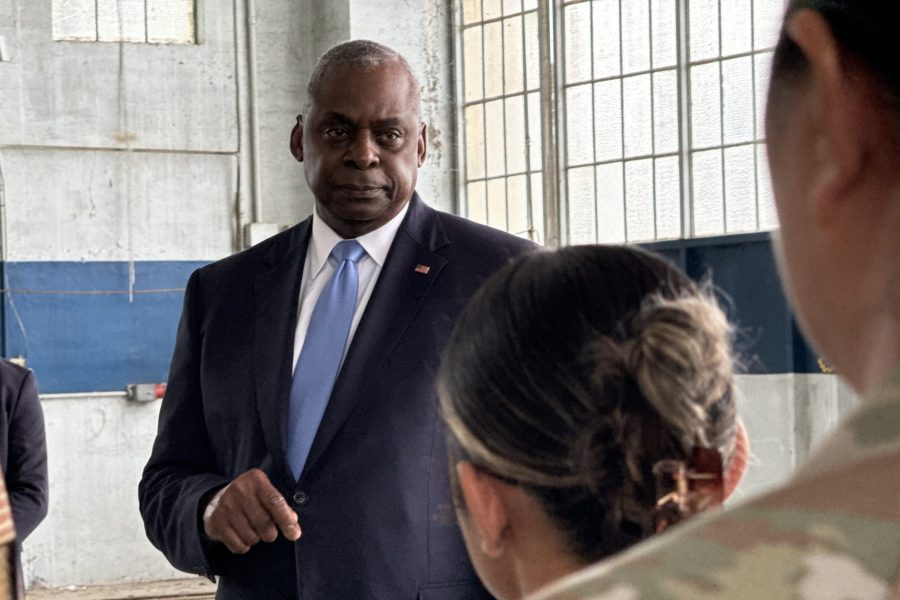MAXWELL AIR FORCE BASE, Ala.—The Pentagon remains determined to maintain sufficient forces in the region to deter Iran from attacking Israel, convinced that expanded pressure there is deterring aggression, Secretary of Defense Lloyd J. Austin III said on a visit here Sept. 13.
“The force posture does matter,” Austin said. “It has mattered a lot. It’s not just the capability being there. It’s the messaging associated with that. It’s the active engagement of leaders. As we endeavor to manage the crisis, what we’re doing on both sides of the fence is to make sure we don’t allow something to unnecessarily escalate out of control.”
Austin’s comments came a day after the Pentagon announced that the aircraft carrier the USS Theodore Roosevelt and its battle group had left the Middle East. But the departure, after a lengthy deployment, does not mean that Iran’s threat to retaliate against Israel for an attack that killed the ranking political leader of Hamas during a visit to Tehran is over, or that U.S. forces in the region would continue to draw down.
“It does not mean that there is not a threat from Iran and that we should no longer be concerned,” Austin said. “I think you have to take them at their word when they advertise their intent to do something, whether it’s today or in the future. So I think it’s important to remain at the ready—especially for Israel to remain at the ready.”
To deter Iran, whether on its own or through regional proxies like Hezbollah in Lebanon, the Biden administration warned publicly that Iran’s newly elected government and economy could suffer a devastating blow were it to mount a major attack against Israel. The U.S. rushed additional naval and air forces to the region to back up that warning.

Now, with the departure of the Roosevelt, the U.S. is keeping U.S. Air Force F-15, F-16, and F-22 squadrons. Also in the region: the aircraft carrier USS Abraham Lincoln battle group in the region, with its airwing that includes F-35Cs, and a battlegroup that includes guided missile destroyers. A nuclear-powered submarine, the USS Georgia and its some 150 Tomahawk land-attack cruise missiles, is also in the Middle East.
All told, the Pentagon secretary said, the U.S. still has more forces in the region than it had on April 13, when it helped Israel neutralize an Iranian attack that sent more than 300 ballistic missiles, cruise missiles and drones to Israel, and 99 percent were intercepted.
U.S. Air Force F-15E Strike Eagles and F-16 Fighting Falcons shot down more than 80 Iranian drones and American destroyers intercepted some of Iran’s ballistic missiles during the April episode.
Deterring China is the Pentagon’s primary long-term preoccupation, and its actions in other parts of the world carry a message for China and other potential aggressors. The U.S. wants to strengthen its NATO alliance, and is providing weapons to Ukraine to help Kyiv defend itself against Russian aggression. Yet as the anniversary of Hamas’s attack on Israel approaches Oct. 7, the U.S. finds itself continuing to maintain a strong military presence in the Middle East.
“I still have an aircraft carrier in the region and I still have a lot of other capability in the region,” Austin said, responding to a question from Air & Space Forces Magazine. “I know you guys track what’s there and not there on a daily basis. But, again, when you saw us do what we did on the 13th of April, we didn’t have two aircraft carriers in the region then. We actually still have more capability in the region than we had on the 13th of April.”


